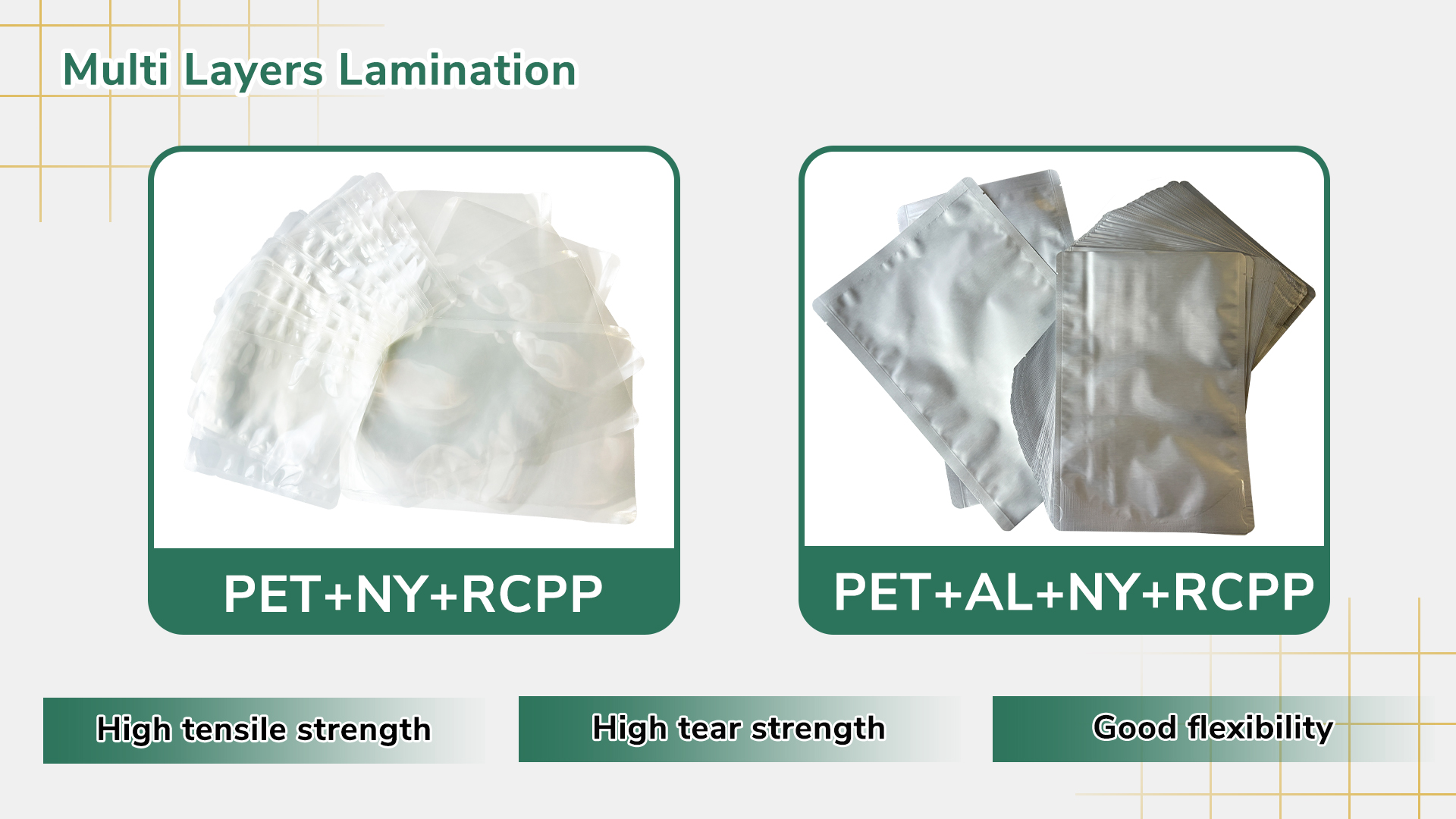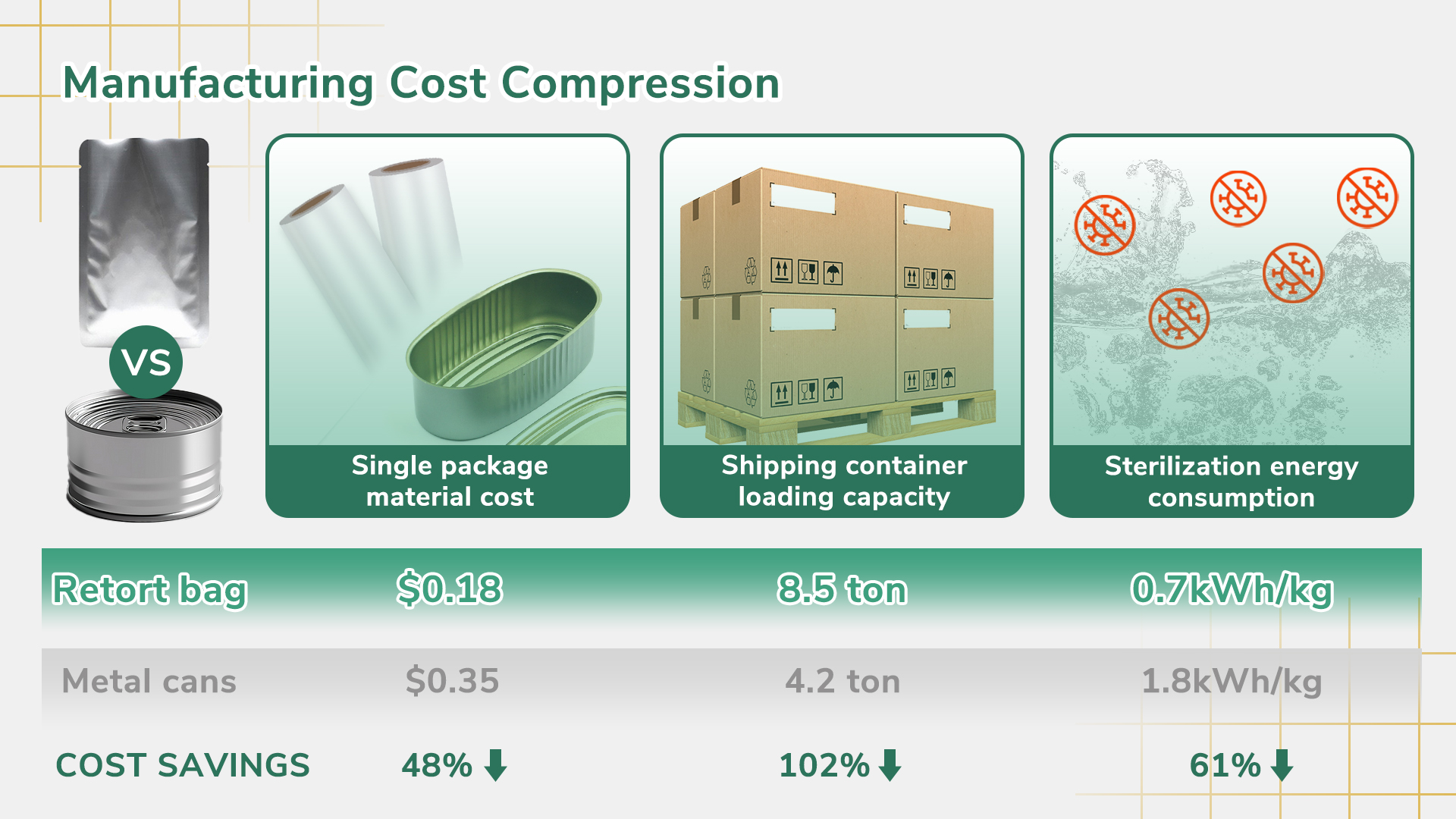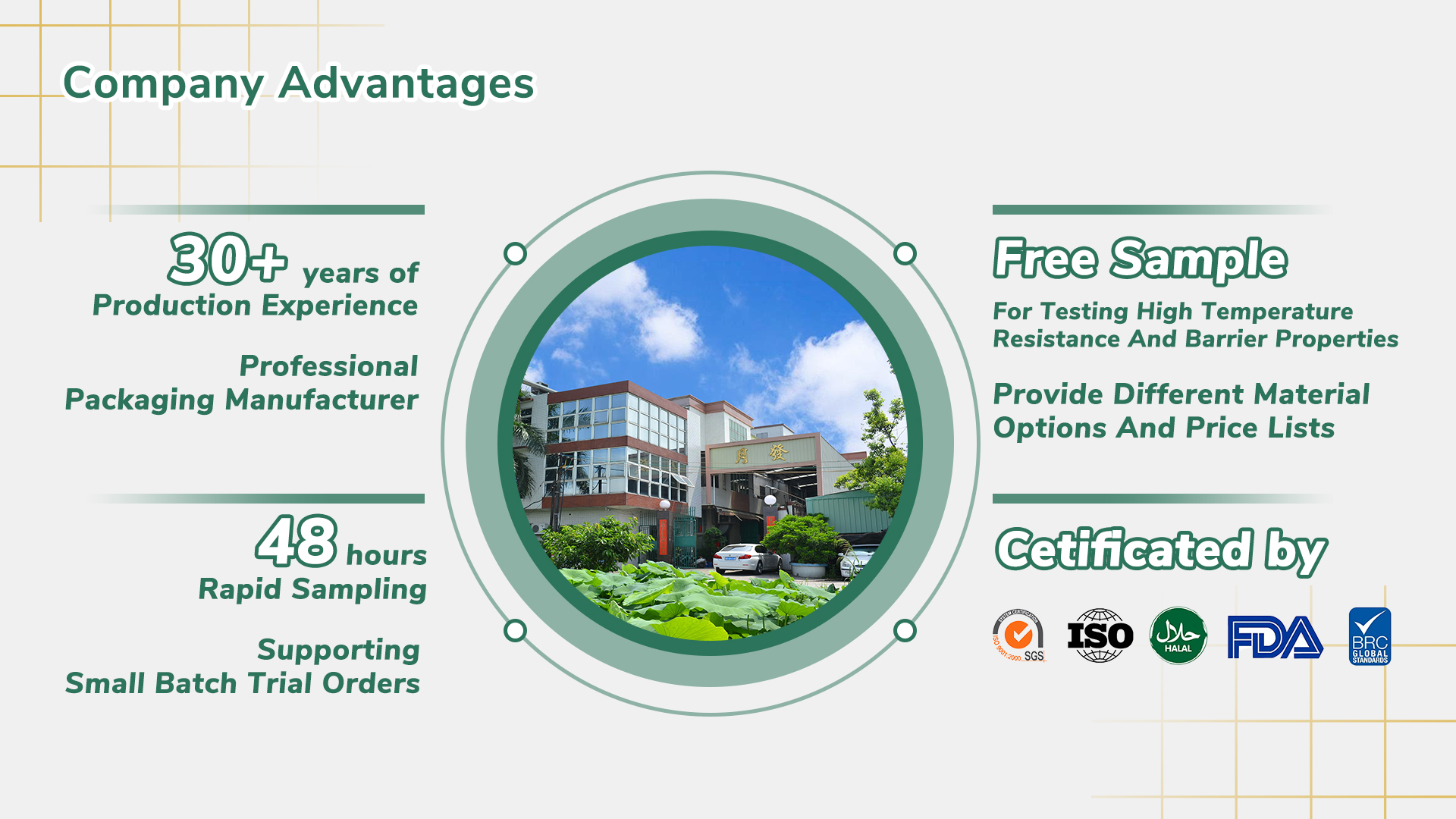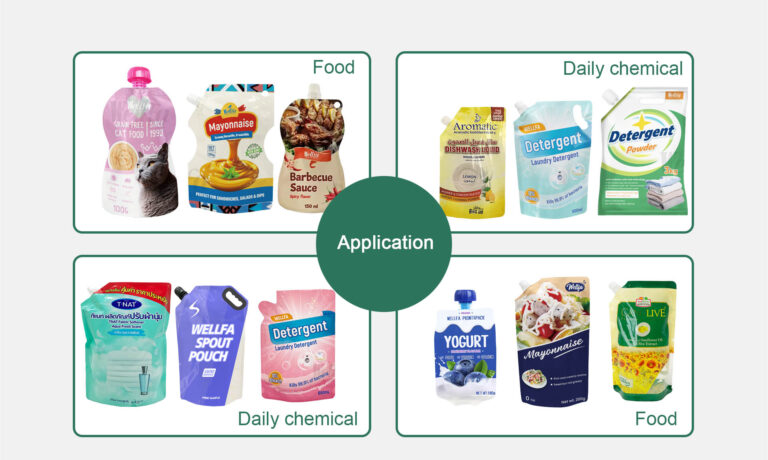18-121 ° C 멸균을 통한 월 유령: 레토르트 파우치 예제
목차
전통적인 진공 포장은 종종 습하고 뜨거운 환경에서 팽만감을 느낍니다. (23% of food loss is due to packaging failure). Pasteurization cannot penetrate high-fat foods due to its technological limitations. Metal can packaging results in a 30% inefficient space, becoming a black hole for warehouse costs for enterprises. Glass bottles have a high breakage rate during transportation.

The types of sterilization
It generally last from 15-20 에게 30-45 분, depending on the sterilization method for different foods, such as pasteurization, boiling sterilization, and high-temperature sterilization.
**Technical Parameter Comparison:**
– Boiling: 100-118℃
– Pasteurization: 100℃
– High-Temperature Sterilization: 121-135℃

Why to choose Retort Pouches
The 121°C high-temperature sterilization process **utilizes a multi-layer barrier structure (such as PET/AL/NY/RCPP) to completely kill bacterial spores**. After sterilization, the oxygen transmission rate of the packaging bag is ≤0.05cc/m², enhancing the barrier performance by 16 times.
1. **Excellent Barrier Properties**

– **Oxygen Barrier**: Effectively prevents oxygen from entering the bag, slowing down the oxidation process of food, preventing rancidity of fats and oxidation of vitamins, thereby maintaining the flavor, 색상, and nutritional value of the food, and extending its shelf life.
– **Moisture Barrier**: Prevents external moisture from entering the bag while retaining the moisture inside the food, maintaining its original texture and quality.
– **Light Barrier**: Some retort pouches contain materials like aluminum foil with light-blocking properties, preventing light from irradiating the food, avoiding photochemical reactions, and reducing nutrient loss.
2. **Maximized Product Flavor Retention**
– High-temperature sterilization can shorten the sterilization time to 15 분 (traditional methods require over 45 분), ensuring the integrity of food nutrition and flavor.
– **Extreme Environment Resistance**: No delamination from -40°C freezing to 135°C retorting, suitable for global supply chains.
3. **Good Physical Properties**

– **High Strength**: Retort pouches are made of multi-layer composite materials with high tensile and tear strength, making them resistant to rupture and damage, protecting the food from external forces during packaging, transportation, and storage.
– **Flexibility**: Retort pouches have good flexibility, making it easy to package food of various shapes and sizes, and they do not crack or break when bent or folded, facilitating consumer use.
4. **Convenience and Practicality**

– **Easy Opening**: Some retort pouches are designed with easy-tear notches, allowing consumers to open them without additional tools, enhancing usability.
– **Microwave Heating**: Some retort pouches can be directly heated in a microwave, meeting modern consumers’ needs for convenience and quick meals. Processing time is reduced by 47%.
– **Lightweight**: Retort pouches require the least packaging material for the same volume of products compared to traditional glass or metal packaging. They are lightweight, easy to carry and transport, reducing shipping costs and the weight of packaging waste, which is beneficial for the environment.
**Technical Parameter Comparison:**

1.**Cost Comparison:

Sterilization bags offer several environmental benefits over metal cans:
2. **Reduced Energy Consumption**: Sterilization bags require less energy during the sterilization process compared to metal cans. They consume 0.7kWh/kg during sterilization, whereas metal cans consume 1.8kWh/kg, representing a 61% reduction in energy usage.
3. **Lower Carbon Footprint**: Due to their lighter weight and more efficient transportation, sterilization bags have a lower carbon footprint. They can be transported more efficiently, reducing emissions associated with transportation.
4. **Resource Efficiency**: Sterilization bags are designed to be lightweight and use fewer resources, making them a more sustainable option compared to the heavier and more material-intensive metal cans.
These environmental benefits make sterilization bags a more sustainable choice for packaging and sterilization needs in various industries.
Customer Case Studies:레토르트 파우치 Example
– A Mexican chili sauce exporter used a 4-layer retort pouch with a straw, reducing the cargo damage rate from 7% 에게 1% during sea transport to Europe and extending the shelf life to 18 달.
– A Chinese frozen pre-cooked food brand used transparent retort pouches to enable microwave heating visualization, increasing the retail price by 15%.
– A Malaysian coconut water beverage brand switched to stand-up retort pouches, extending the product’s shelf life and increasing the distributor’s shelf turnover rate by 20 days.
Sterilization bags are commonly made from a variety of materials, each with specific properties and applications. Here are the most common materials used:

The choice of material depends on the specific sterilization method and the requirements for maintaining sterility and integrity of the contents.
Technical Certification Certificates
High-temperature retort certification, 할랄, ISO9000, BRC, FDA, SGS EU. Providing global compliance assurance and supporting halal and organic food packaging needs.
**Take Action Now to Seize Market Opportunities**
1. Different material solutions and price lists.
2. Free sample testing for high-temperature resistance and barrier properties.

**왜 우리를 선택하십시오?**
– Over 30 years of production experience as a professional packaging manufacturer.
– 48-hour rapid prototyping, supporting small-batch trial orders.
– One-stop solution from design to certification.
**Consult Now and Let Your Product Packaging Become a Competitive Edge!**
Empower your brand with technology — Your global retort pouch strategic partner.


